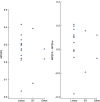The potential impact of Supplemental Nutrition Assistance Program (SNAP) restrictions on expenditures: a systematic review
- PMID: 26647851
- PMCID: PMC10271010
- DOI: 10.1017/S1368980015003511
The potential impact of Supplemental Nutrition Assistance Program (SNAP) restrictions on expenditures: a systematic review
Abstract
Objective: To systematically review the potential impact of reducing the set of Supplemental Nutrition Assistance Program (SNAP)-eligible foods (e.g. not allowing purchase of sugar-sweetened beverages with SNAP benefits) on expenditures for restricted foods.
Design: The impact on food expenditures of a $US 1 reduction in available SNAP benefits can be used to estimate the impact of restrictions on SNAP-eligible foods. An electronic search of EconPapers, AgEcon Search, EconLit, WorldCat, ProQuest Dissertations and Theses, PubMed and NALDC, and a snowball search were conducted to obtain a sample of studies up to March 2015 that estimate the impacts of SNAP and other income on household food expenditures. The studies were classified according to study population, study design and whether they attempted to correct for major study design biases.
Setting: Estimates were extracted from fifty-nine published and unpublished studies.
Subjects: US households.
Results: Fifty-nine studies were found, yielding 123 estimates of the impact of SNAP benefits on food expenditures and 117 estimates of the difference in impacts between SNAP benefits and other income. Studies correcting for or mitigating study design biases had less estimate variation. Estimates indicate that expenditures on the restricted item would decrease by $US 1·6 to $US 4·8 if $US 10 of SNAP benefits would have otherwise been spent, with a median overall impact of $US 3.
Conclusions: The present literature suggests that restrictions on SNAP-eligible items may result in a small but potentially meaningful decrease in SNAP expenditures for restricted items. Further research is needed to evaluate whether this would translate into improvements in diet quality.
Keywords: Food expenditures; Policy; SNAP restrictions; Supplemental Nutrition Assistance Program/food stamps.
Figures









References
-
- Larson N & Story M (2011) Food insecurity and weight status among US children and families: a review of the literature. Am J Prev Med 40, 166–173. - PubMed
-
- Cole N & Fox M (2008) Diet Quality of Americans by Food Stamp Participation Status: Data from the National Health and Nutrition Examination Survey, 1999–2004. Nutrition Assistance Program Report no. FSP-08-NH. Alexandria, VA: Office of Research, Nutrition and Analysis, Food and Nutrition Service, USDA.
-
- US Government Accountability Office (2008) Food Stamp Program: Options for Delivering Financial Incentives to Participants for Purchasing Targeted Foods. Report no. GAO-08-415. Washington, DC: GAO.
-
- Alston J, Mullally C, Sumner D et al.. (2009) Likely effects on obesity from proposed changes to the US Food Stamp Program. Food Policy 34, 176–184.

